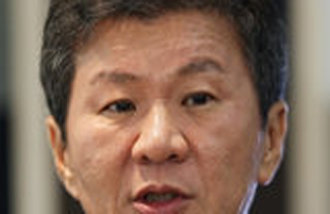Base Standoff Ends; Tensions Remain
On May 4, Daechu branch school, which was the foundation for the argument of protestors against the transfer of a U.S. military base into Pyeongtaek, Gyeonggi, was removed and a steel wire fence has been installed near the expanded U.S. military base. This has proved to be the turning point in the strife against the transfer.
A collision happened during the forceful clearance and installation of the fence at the transfer location between Ministry of National Defense, the police, and protestors, which put everyone involved to blame.
The ministry did not promptly offer an alternative for the residents of the future transfer location, and the campaign was lacking. The ministry actually established the Pyeongtaek support bill only after Pyeongtaek city and Gyeonggi filed complaints, and the specific transfer policy was delayed again and again.
Because the police were passive in executing any legal action, they were also criticized for contributing to the problem.
A police official said, It is true that since former head of National Police Agency Huh Joon-young quit last year because of the farmers protests, the atmosphere has discouraged the exercise of public power. The Daechu-ri happening is going about in a very similar way.
The government isnt the only one at fault. Anti-war and anti-American protesters approached the farmers who wanted to remain in their hometown and set up a committee that advocated anti-American sentiment, creating a hotbed for political strife.
The crucial moment has passed, but there still remains a myriad of problems. Some farmers are determined to make a living staying right where they are, regardless of the school removal. The anti-relocation committee announced their intention to continue on with the struggle, while using the whole second floor of the residence center as a briefing room. The embers are still simmering.
The Ministry of National Defense is expected to finish their master plan with American officials for the transfer before September. For the planned the foundation construction process, environment evaluation, and cultural excavation, October will be a month of fast progress.
The environment evaluation was supposed to be done last December after the negotiations for the Pyeongtaek base were closed, but this was delayed and abandoned until now.
When the foundation construction process is completed, the facilities will be built from April 2007 to December 2008, and American soldiers will move in 2009. But conflict is expected to arise from the recovery bills for environmental damage in other U.S. military bases to be returned to Korea, and earth filling fees for the Pyeongtaek base.
In the likelihood of both sides not backing down on their stances regarding the huge fees, a delay of a year or two from the original schedule is not entirely impossible.
Min-Hyuk Park Kyung-Hyun Nam mhpark@donga.com bibulus@donga.com







